Zack And Cloud Parallels
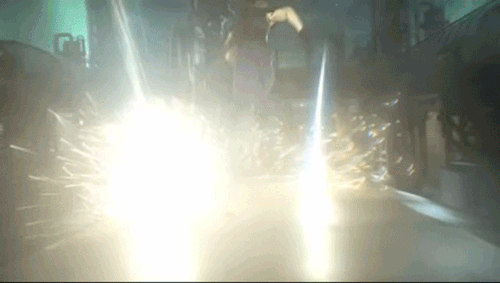
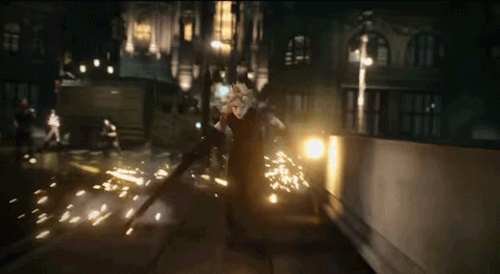
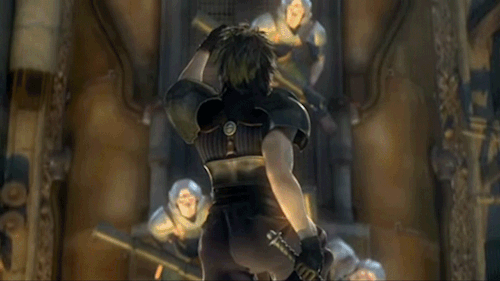
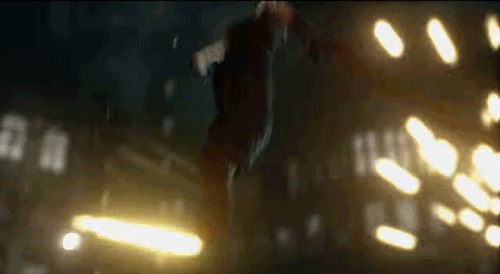
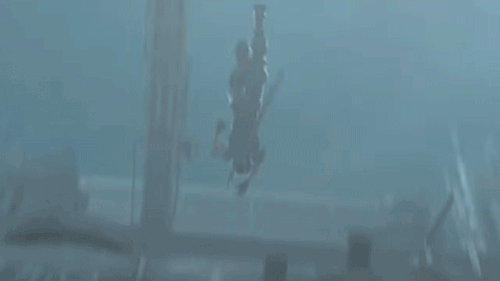
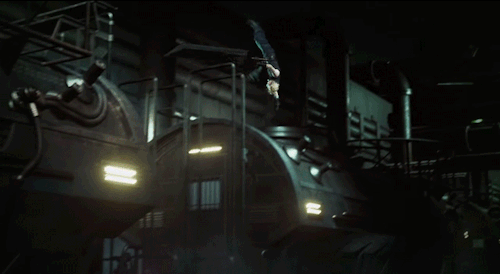
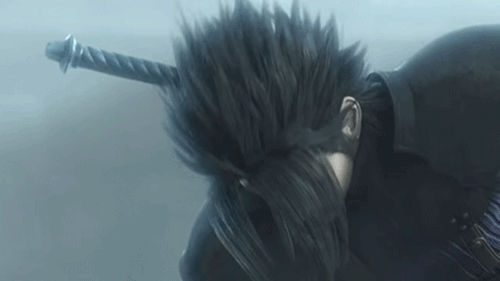
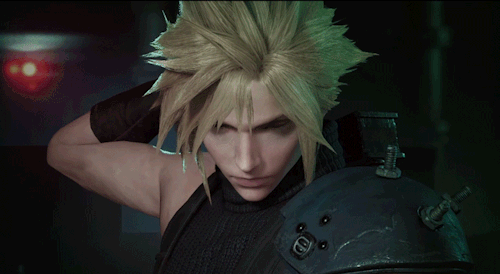
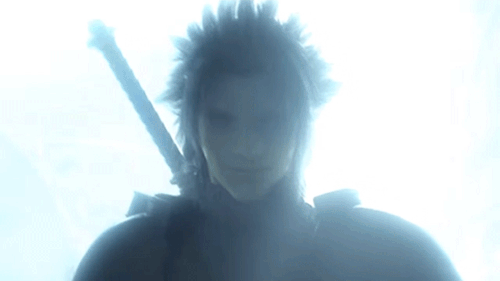
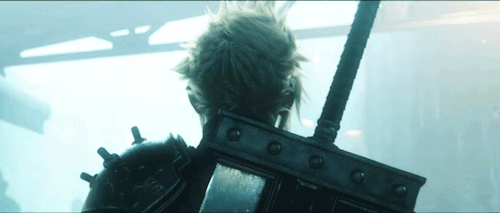
Zack and Cloud parallels
Crisis Core vs. Final Fantasy VII Remake
More Posts from Terra-fatalis and Others
i love it when italians argue about italian. like we don’t even know how our language really works we just roll with it
Aerith and Tifa as Sephiroth’s Foils
There are a lot of moving pieces to Final Fantasy 7–something that has historically contributed to its infamous reputation of being confusing. But one consistent thematic pattern that FF7 utilizes is duality. Life and death. Meetings and partings. Loneliness and togetherness. Many of the main themes presented in FF7 fall into this same format. Even the characters can be considered dualities in and of themselves. One of the most obvious dualities in the game is that of Aerith and Sephiroth. However, in varying degrees, all of the main characters are in some way antithetical to Sephiroth.
Like in many other classic hero vs. villain tales, you’d think that Cloud is the perfect foil to Sephiroth–after all, they’re at odds, so it would make sense that they’d be opposites. However, what makes Cloud and Sephiroth’s conflict so fascinating is that they actually have a good amount in common. Both Cloud and Sephiroth struggle with their identities. They also experienced trauma and loneliness in the past, and tended to isolate themselves from others. It’s this commonality that actually makes them compelling rivals, as Cloud not only has to battle Sephiroth, but also the aspects of Sephiroth that Cloud himself struggles with.
The real foils of Sephiroth are Aerith and Tifa. While there is some debate as to whether Aerith or Tifa is the real heroine of FF7 (mostly spear-headed by weird LTD-pushers), the big-brained answer is that they’re both the heroines. This is evident in concept art from an older FF7 Ultimania, pictured below:

As you can see, the concept for the story’s heroine started out as a hybrid of Tifa and Aerith. The character’s design resembles Tifa, and the name below the sketch reads “ティファ”, or Tifa. However, the character’s role was very different. She was intended to be both the childhood friend of Cloud Strife and a Cetra, the sister of Sephiroth (who originally looked more like Vincent). Eventually, the idea to kill off one of the main characters was introduced, and the role of the heroine was split in two: the Cetra, Aerith, and the childhood friend, Tifa. There is some evidence of the original concept still present in the series; Tifa’s iconic red eyes match Vincent’s, because originally, the two characters were designed to be siblings before eventually going to separate roles.
Based on this evidence, it would seem logical that both Aerith and Tifa retained their dualities with Sephiroth. And, indeed, even in the final product, both characters provide a foil for Sephiroth to balance the scales.
To exemplify the dynamic that Cloud, Tifa, Aerith, and Sephiroth have with one another, I’ve drawn a (crude) spectrum:

Obviously, Aerith and Tifa play different roles and have different importance to the story. Aerith’s role is more “big picture”, so to speak. She is responsible for the Planet and for protecting it from Sephiroth after discovering his plans to destroy it. Tifa’s role is more fine-tuned and detailed. She is the rock and the only stable element of the Nibelheim story, a key part of Cloud, Zack, and Sephiroth’s backstories. To understand how each of them foils Sephiroth, we have to look at them individually and analyze how they interact with both Sephiroth and Cloud.
Part I: Aerith as Sephiroth’s Foil
As stated above, Aerith’s role as foil is a little more obvious. Sephiroth and Aerith are both “Cetra”–or, at the very least, they both claim to be. For Sephiroth, his identity as a Cetra is tied to his belief that Jenova, his “mother”, was a Cetra who was betrayed by humanity when humans left the traditional Cetra nomadic lifestyle in order to colonize the land and the Planet.
However, Jenova was not a Cetra at all–she was actually a “calamity from the skies” that crashed down and created the Northern Crater two thousand years before the events of FF7. After encountering the Cetra, the creature known as Jenova began infecting and killing the Cetra one by one. These killings only stopped when the Cetra banded together to seal Jenova in the Northern Crater; but, by the time it was done, the Cetra were dying off.
So how did Jenova become known as a Cetra? That seems like more than a clerical error to me. It was actually Aerith’s father, Professor Gast, who uncovered Jenova from the Northern Crater and mistakenly identified her as a Cetra. The Shinra Corporation, desperate to find the Cetra’s “Promised Land” thinking that it would be rich in Mako energy, enlisted the professor to find a way to create a Cetra from a human specimen. Using the cells extracted from Jenova, Sephiroth was created, and after reading Shinra’s archives, he discovered his relationship to Jenova and embraced his identity as “Cetra”.
Aerith, on the other hand, really is a Cetra. Her mother, Ifalna, was the last Cetra–making Aerith, by relation, half-Cetra. Her connection to the Cetra race is real, unlike Sephiroth’s.
This give her declaration in the final chapter of FF7 Remake all the more important:

There’s a duality between Aerith and Sephiroth in truth versus lies. Aerith’s heritage as a Cetra is founded in truth. She is connected to the Planet in a way that is real. She is a Cetra, in covenant with the Planet to protect it that was passed down to her by her mother. In contrast, Sephiroth’s claims to be a Cetra are lies–whether he’s aware of it or not. Jenova, Sephiroth’s “mother”, is not a Cetra. She is not even from the Planet, but rather from somewhere beyond it. Jenova acted as a parasite of the Planet and is actually responsible for sending it into chaos and draining it of its life. He has no real obligation to protect the Planet, and he is not truly connected to it the way that Aerith is.
Aerith and Sephiroth also represent the original duality between the Cetra and Jenova, with both parties continuing to be at odds with one another even two thousand years later.
Tying in a more overarching FF7 theme, Aerith and Sephiroth also personify the duality of life and death, respectively. With Aerith, her “domain” of sorts, the Sector 5 church, is bursting with life. It is the only place in Midgar where flowers will grow. Even gameplay-wise, she is a healer, and is constantly giving life to other characters in the party. Sephiroth, on the other hand, only destroys. He set fire to Nibelheim and killed the townspeople, including Cloud’s mother and Tifa’s father. Cloud even notes his strength while recounting his version of the events in Nibelheim.
Cloud: “Sephiroth’s strength is unreal. He is far stronger in reality than any story you might have heard about him.”

Therefore, Aerith and Sephiroth represent two different dualities: life versus death, and truth versus lies.
Part II: Tifa as Sephiroth’s Foil
Tifa’s role as foil to Sephiroth is more understated but nevertheless important, especially in the latter half of the story. Tifa, Cloud, and Sephiroth are the only survivors of the Nibelheim incident, wherein Sephiroth burned the town of Nibelheim to the ground and killed the townspeople after discovering his “Cetra” heritage. However, Cloud’s memories are clouded due to his trauma and the Mako poisoning he endured during the five-year gap between the Nibelheim incident and the start of FF7; and Sephiroth purposefully twists the truth in order to weaken Cloud’s already-fragile mental state. Therefore, the only one who can decipher what’s true and what’s not is Tifa.
Like Aerith, Tifa also represents the truth, while Sephiroth represents lies and deceit. This is very evident in this scene that takes place in the Northern Crater, and again in a scene during Tifa’s journey into Cloud’s mind. In the Northern Crater, Sephiroth tries to convince Cloud that he was never real, and that all of his childhood memories, even the ones he shared with Tifa, were fabricated.
Sephiroth: “You are just a puppet… You have no heart… and cannot feel any pain… How can there be any meaning in the memory of such a being? What I have shown you is reality. What you remember, that is the illusion. […] Five years ago you were… constructed by Hojo, piece by piece, right after Nibelheim was burnt. A puppet made up of vibrant Jenova cells, her knowledge, and the power of Mako. An incomplete Sephiroth-clone. Not even given a number. …That is your reality.”
Sephiroth, at first, succeeds in convincing Cloud that he is not the “real” Cloud but rather someone who never existed, who never grew up in Nibelheim, and who clung on to fake memories as a means to cope with that fact. However, later in the Lifestream, Tifa expresses a different sentiment:
Tifa: “Sephiroth once said… Cloud made up his memories by listening to my stories… Did you imagine this sky? No, you remembered it. That night the stars were gorgeous. It was just Cloud and I. We talked at the well… That’s why I continued to believe that you were the real Cloud. I still believe you’re the Cloud from Nibelheim…”
By reminding Cloud of a memory they both share–a true memory–she is able to provide a solid ground, wherein Cloud can begin to rebuild his true self after falling for Sephiroth’s deception.
Obviously, Tifa’s relationship with the truth is complicated, and she herself suffers from her own self doubt throughout the story. But in this defining moment, Tifa finally realizes without a doubt what the truth is, and together both Cloud and Tifa are able to reconstruct what really happened in Nibelheim and solve the mystery once and for all.

But this duality isn’t simply about truth versus lies. It’s also about hope versus despair. In deceiving Cloud, Sephiroth strips him of all his hope. Cloud is filled with such fundamental despair that he can’t see the truth and believe that he is indeed an experiment created by Hojo. Tifa, in contrast, provides him with hope when she affirms his memories with her own. Separately, Tifa’s resolve to continue the team’s journey without Cloud is another example of her hope in the face of Sephiroth’s despair.
The idea of hope versus despair in Sephiroth and Tifa is exemplified in Kingdom Hearts (although KH is not canonically related to FF7, I think it’s a neat little call back):

Tifa: “Cloud, you can have my light.”
In Kingdom Hearts II, Sephiroth represents Cloud’s darkness, while Tifa represents Cloud’s light. This is a similar dichotomy to truth versus lies, metaphorically, where Sephiroth is “casting shadows” on the truth, and Tifa is “shedding light” on what really happened. (Okay, sorry for the puns!)
Another duality that Tifa and Sephiroth represent is the dual meaning of reunion in the context of FF7. It’s common knowledge among FFVII fans at this point, but to everyone who’s playing for the first time or who has recently picked up the franchise and not gotten all caught up yet, Sephiroth talks a lot about “the Reunion”. Like, a lot. Sephiroth’s “reunion” is a reference to the Reunion Theory, a scientific theory posited by Professor Hojo that states that Jenova’s cells–once separated from their host, i.e. Jenova–will seek out the main body. This makes everyone who has ever been injected with Jenova’s cells essentially part of a massive Jenova hive mind, with the primary goal to eventually reunite with Jenova.
Obviously, this is a bad thing for Cloud, who was exposed to Jenova cells and is thus connected to Sephiroth.
However, Cloud and Tifa also have a reunion at the beginning of the story–a reunion between friends who haven’t seen each other in a long time. Unlike Sephiroth’s reunion, this is a positive thing. Cloud and Tifa, on multiple occasions, discuss “meeting again” and “finding each other” after so many years apart. Even after they reconstruct Cloud’s memories, he says:
Cloud: “Yeah…… Tifa…… We finally…… meet again……”
Sephiroth’s reunion with Cloud leads him astray from the path; Tifa’s reunion with Cloud sets thing right again. One reunion destroys Cloud’s perception of what’s real, and the other helps him to find the truth once again. Reunion changes meaning with Sephiroth and Tifa, and these opposing definitions of what “reunion” is make Tifa and Sephiroth perfect foils.
Part III: Final Thoughts
Part of what makes Sephiroth such a compelling villain are the striking similarities he shares with the protagonist Cloud Strife. In the original storyboard for FF7, Tifa and Aerith shared a role as the main heroine and the perfect foil for Sephiroth. But even after the role was separated into two distinct characters, the characteristics that made each one of them a foil to Sephiroth remained. For unique reasons, they balance the scales, providing an anchor of “good” to counteract the badness of the story’s main antagonist.
That’s all I have to say about it! I’ve been thinking a lot about Tifa and Aerith’s unique roles in the story as deuteragonists, or dual heroines, and how they both represent antitheses to Sephiroth. I figured I share my thoughts!








❀ Aerith smiling at Cloud ❀





REBIRTH
FFVII Remake Easter Eggs and compilation continuity - Part 8: OG FINAL FANTASY VII
ELEMENTS USED IN A DIFFERENT CONTEXT OR FOR A DIFFERENT PURPOSE

SAVE POINTS
The save points of the original FFVII consisted in an angled C (”check point”) floating on a crystal base. In the REmake there are no more save points but the same symbols appear on the healing benches.

PHS
In the OG the player could use the PHS tool in the world map or at the save points to switch the party members. In the Remake there are PHS terminals in Shinra HQ that the group use to communicate and switch between two parties in Chapter 17.

TIFA’S PIANO
During her childhood Tifa had a piano in her bedroom. Among the many posters of the REmake there are some with the image of a keyboard, one of them indeed hung in Tifa’s bedroom.

THE HOUSE SPECIAL
We know from the original game that Avalanche was originally founded in Cosmo Canyon. This is also the name of one of the drinks served at Seventh Heaven, Avalanche’s hideout.

OG: Cosmo Canyon... This is where AVALANCHE was born...
Remake: Our house special: the Cosmo Canyon.
BEST GUIDE
When Sephiroth, Zack and Cloud arrived at Nibelheim years before, Tifa escorted them to the reactor, saying she was the best guide of the town. In the Remake too she proposes to be Cloud’s guide in the Sector 7 slums (reference more clear in the Jp version).

OG: I’m the number one guide in this town.
Remake: I know these streets better than anyone. (Jp version: I’m the best guide of the slums).
PARACHUTING
In the OG Cloud and the others parachuted themselves on Midgar from the Highwind, in order to prevent Hojo to use the Sister Ray to help Sephiroth. In the Remake Cloud, Jessie, Biggs and Wedge parachute back in Sector 7 after the mission in Chapter 4.

MUSEUM
At Gold Saucer, Dio had a personal museum with a big picture of himself. Moreover, he had also a massive gold statue at the top of the amusement park. In the Remake, the 60th floor of the Shinra building hosts a museum where there’s also a big golden statue of the President.

VIRTUAL REALITY
Bugenhagen has a 3D holographic symulator in the Cosmo Canyon observatory, necessary for his planetology studies (Shinra machinary he received from Professor Gast). “Cosmos theatre” is a 3D virtual reality symulator where visitors can learn about the Ancients and the Promised Land.

DA-CHAO
During Intermission Yuffie uses to eat “Da-chao beans”. Da-Chao an important water deity of Wutai and its massive statue is sculpted in the mountain overlooking village.

WALL MARKET
In the original FFVII, the Honeybee Inn was a brothel, while in the Remake it’s a night club. Anyway, the hand massages at Madam M’s parlor are kind of allusive, especially the Luxory Course.

ARENA
The Battle Square (or Battle Arena or Colosseum) was an area of the Gold Saucer, where Cloud could entertain Dio with a match in exchange of the Keystone. In the Remake, also Corneo has a Colosseum at Wall Market.

DATES
In the OG, depending on the player’s choices, Cloud could spend a date at the Gold Saucer with Aerith, Tifa, Yuffie or Barret. A similar system exists also in the Remake and it affects a cutscene at the beginning of Chapter 14.

SHOWMAN
During the date at the Gold Saucer, Cloud and the girl (NB: not Barret) had to take part to a stage show where they played the parts of the knight and the princess. In the Remake, in order to obtain the dress-up to infiltrate Corneo’s Mansion, he has to take part to a dance show at the Honey Bee Inn.

THE PRINCESS
Princess Rosa was one of the protagonists of the Gold Saucer show, played by Aerith, Tifa or Yuffie during the date. In the Remake Cloud can read a letter in the room of Jessie’s father, where Jessie announced to her parents that she obtained the part of the princess in a show at Gold Saucer.

Jessie Raspberry as...the Princess?
FIREWORKS
There were fireworks creating a romantic atmosphere during the ride on the gondola at Gold Saucer. In the Remake, if Aerith is wearing the red dress, her appearance is accompanied by fireworks and red carpet.

KISS
The LTD has split the fandom for ages, but the only two girls who have ever been shown kissing Cloud are Yuffie (during her GS date) and Jessie (if the player manages to end the bike minigame in Chapter 4 with HP above 80%).

DREAM
In the OG Aerith appeared in Cloud’s dream just before getting to the City of the Ancients, the place where Sephiroth killed her. In the Remake this dream is hinted in two scenes:
1) The way Aerith appeared at Cloud at the beginning of Chapter 9 recalls the way she appeared in his dream (which triggers in Cloud a vision of her death).

2) She appears in his dreams again during her resolution scene, using gestures and words that hint at her death.

VOICES OF THE PLANET
Aftyer Meteor was summoned in the OG, Cloud and the others could hear the scream of the Planet from the Highwind. In the Remake, when the group faced Sephiroth at the end of the highway, the Whispers start screaming in pain and Aerith said those were the voices of the Planet.

OG: RedXIII: Did you...hear something? - Tifa: The Planet’s scream...or Meteor? Is it this Planet? - Cloud: Hey, how do we know that this is really the Planet’s scream? - Tifa: Did you forget? Bugenhagen told us.
Remake: What you heard just now were the voices of the planet. Those born into this world. Who lived and who died. Who returned. They're howling in pain. (...) They... Their words...they don't reach him. All these moments and memories, precious and fleeting...they're like rain rolling off his back... And when they're gone, he won't cry...or shout...or anything.
CLOUD VS SEPHIROTH
In the original FFVII, after the defeat of Safer∙Sephiroth, Cloud and Sephiroth had a final mental duel. At the end of the Remake Sephiroth mentally drags Cloud to the “Edge of Creation” with a symilar dynamic.


Aerith inspired by the works of Mucha
Talk about a coincidence!
(Previous post here)
Aerith and Tifa parallel
Eyes are the window to the soul
Cloud has the so-called Mako-Eyes, due to Mako infusion treatment. This is normally a distinctive mark of SOLDIERS and during the game many characters notice them: President Shinra, Reno, Rude, Elmyra...
Aerith
Aerith commenting about Cloud’s eyes was an important plot point of the OG as it was the first hint about her connection with Zack.

This dialogue takes place when they escape from the church across the rooftops of Sector 5 slums.

The devs decided to change this scene for the Remake and replace it with one that recreates step by step a romantic moment between Aerith and Zack from Crisis Core (for those who don’t know what I’m talking about, 0:13).

When Cloud and Aerith arrive in Evergreen Park, a place that's special for her, she starts talking about Zack and her cheerfulness fades away for the first time.

Zack’s name causes Cloud one of his migraine attacks. When he opens his eyes again she comments about their beauty and when he points out that’s because of the Mako she just sais “...I know”.


Tifa
In Chapter 3 Johnny is arrested by Shinra Public Security and Cloud and Tifa have to intervene to make sure he doesn’t talk about Avalanche. Cloud seems to have no hesitation to kill Johnny but Tifa stops him.

This is the first time during the game where she openly states how much he’s changed and, coincidentally, she does it commenting about his eyes. Of course she’s not talking about their color. Here too he answers in a similar way, saying it's because of the Mako, to which she replies “I remember...”.


---
To sum up
Aerith:
likes SOLDIER eyes
because they remind her of Zack, the guy she loved.
She gets sad because she misses Zack.
In Crisis Core Mako eyes were described as “color of the sky - but not scary at all”.
Tifa:
doesn’t like SOLDIER eyes
because they are different from those of the guy she had a crush on.
She gets sad because she misses the Cloud of 7 years ago.
The camera focuses on his eyes while she says that he’s scaring her.
...
WAIT!
The devs can’t be saying that SOLDIER-Cloud is NOT real-Cloud, that Aerith likes his Zack-side and that real-Cloud doesn’t use to cut civilians in half with a massive sword...
... Right?!
What an unexpected & unexplainable coincidence!
A Clinical Analysis of Cloud's Psychology, Part III - Reintegration and Unconditional Love

This is the conclusion to my series on Cloud's psychology, where I will discuss identity reintegration. The original was posted on Reddit. You don't need to have read the other posts to understand this one, but it's highly encouraged so you can follow my overall train of thought. I'll still include a quick and dirty review of the important concepts from Part II that will be relevant here. To provide some background, I'm currently training in clinical diagnosis and psychotherapy to become a psychologist. I want to apply what I know to break down our understanding of Cloud in a clinical context.
Part I - Trauma, Dissociation, and Psychosis Part II - Identity, Self-Concept, and Mako Part III - Reintegration and Unconditional Love [you are here]
I find the term reintegration very fitting, considering that Cloud's recovery is portrayed by multiple Clouds coming back together again into one whole person. We've established how Cloud's sense of self was shattered through a combination of trauma, Jenova cells, mako poisoning, and his innate desire for strength. In the real world, he'd likely need therapy over his entire lifetime in order to reorganize his identity. But since this is Final Fantasy, Cloud has access to a special metaphysical experience. When Cloud and Tifa fell into the lifestream, he was able to literally pull Tifa into his subconscious and enable her to help organize his memories. I'm going to discuss how and why this works, as well as why Cloud needed Tifa specifically. I'm NOT trying to put a shipping angle on this, I'm just primarily interested in what it took for Cloud to heal, and it's impossible to ignore Tifa's importance in this case.

Quick Recap of Self-Concept
Self-concept, or your understanding of who you are, is made up of three main parts:
Ideal Self - Who you want or aspire to be
Real Self - Who you actually are
Self-Image - Your mental picture of yourself
A good self-image relies on congruence between the ideal self and the real self. Basically, the more similar they are, the better your self-esteem. If they are dissimilar, then it creates incongruence that reduces self-esteem.
Cloud's ideal self wants to be strong, but his real self never made SOLDIER, resulting in incongruence and low self-esteem for much of his life. After Zack's death, Cloud's ex-SOLDIER persona was born inspired by his ideal self, made to help him process his trauma. This boosted congruence but caused him to dissociate from his real self, leaving him vulnerable to manipulation.
The Importance of Tifa

The cornerstone of identity reintegration in the real world is relational support. Because the individual can't rely on himself to reorient who he is, he needs someone else that is able to do that for him, to contain his uncertainties. This often refers to the therapeutic relationship between a patient and his therapist, where the therapist's assurance provides support to the patient and helps him gain the confidence to safely explore his identity. It's clear that for Cloud, the person who helps him reorient his sense of self is Tifa. While Tifa serves the important role of helping Cloud clarify his memories, this alone isn't sufficient for reintegration, the same as how confronting people with the truth doesn't resolve their delusions. It's Cloud's relationship to Tifa that gave him a source of stability to ground him.
In Cloud's subconscious, Tifa helped Cloud remember key parts of his past that explain who he is in the present and why he knows the things that he does. In psychology, the subconscious contains information that isn't immediately part of a person's awareness, therefore this tells us that Cloud indeed still has his real self buried within him. One of the Clouds is different, a child version of him that is meant to represent his true feelings and therefore can be thought of as his real self. This child Cloud ends up explaining the roots of his identity, primarily his ideal self and how it came to be. Child Cloud explains to Tifa that the reason he wanted to join SOLDIER was because he failed to protect Tifa from falling at Mt. Nibel. This tells us that Tifa is at the root of Cloud's ideal self, something that I will keep emphasizing as the key to her importance.
Because Tifa is the root of his ideal self, she is also a massive determinant of Cloud's self-image. This is precisely why Tifa ended up being the final key to Cloud's breakdown at the Northern Crater. When a relational support is feeling anxious or overwhelmed, this spills over to the person relying on her. Prior to Cloud's disappearance after he gave Sephiroth the black materia, Tifa wasn't able to fully be there for Cloud because of her own confusion and apprehension towards Cloud's ex-SOLDIER persona. This only escalated when Sephiroth used her memories against Cloud, casting doubt on whether or not the Cloud she saw in front of her was Cloud from Nibelheim. Remember, the looking glass self draws self-esteem and self-image from how other people see the individual. When Cloud was unsure of who he was, he attempted to look to Tifa for reassurance, and in the moment she was unable to provide that.
Once they're in the lifestream, a large part of what Tifa did was help Cloud affirm that his memories are real. The spent a lot of their time in Cloud's subconscious comparing his memories to Tifa's. But, it was only when Cloud recalled memories that even Tifa couldn't recall that they truly began to make progress with Cloud's identity reintegration. Tifa didn't dig up Cloud's memories, but notably she prompted Cloud to recall why he wanted to join SOLDIER in the first place. Through this, Cloud was prompted to remember the failures that led to his enlistment. Cloud seemed hesitant to talk about his childhood memories related to this, but Tifa provided continuous encouragement as he walked through what happened. And, by recalling why he wanted to join SOLDIER, Cloud was reminded that he never lived up to that dream, directing them to reflect on the Nibelheim Incident again.
Unconditional Love
If we're trying to look at this from a psychology angle, I'd argue that confirming Cloud's memories isn't the most important thing Tifa did for him. The treatment modality that real world therapists use for identity reintegration is called unconditional positive regard, which is unconditional acceptance of a patient as he is. This is telling the patient, "I'm not here to judge you, I will see you and accept you for who you are." This is how the therapist helps the patient manage his fears and anxieties, creating the space for safely exploring his identity. But Tifa isn't Cloud's therapist, she's a dear friend who has a personal relationship with him. When talking about how loved ones help people experiencing identity problems, we say that their unconditional love is what supports the individual. This is why Cloud needed a loved one to be there with him in his subconscious, so that he could find the courage to explore it. Tifa's devotion in particular is so strong that she decided to stay with him in Mideel, when he was at his weakest. Cloud can easily find assurance that she is there to stay and that even when he is weak, she will still accept him. Also, it's worth mentioning that by allowing Tifa into his subconscious, Cloud is expressing unconditional love for her as well. He doesn't blame her for doubting him and still seeks comfort and reassurance from her.

Remember that Cloud's self-esteem is built upon his ability to protect those he cares about. However, Tifa's unconditional love allows him to reshape how his looking-glass self works. Crucially, she affirmed that Cloud did keep his promise, that he did protect her during the Nibelheim Incident. It's a fairly quick moment in the OG, but arguably one of the most important things Tifa says in the story. Cloud felt like he's been failing Tifa for years, but once Tifa tells him that he kept his promise after all, she is telling him that his real self is more congruent with his ideal self than he thinks. Remember, Tifa is at the root of Cloud's ideal self, which is why he cares so much about what she thinks. By providing affirmation, Tifa gave Cloud a means to reconceptualize his self-esteem in a more positive manner. Her unconditional love is also what gives him the courage to openly admit his facade to the rest of the party later on. There also, when Cloud explains how his ex-SOLDIER persona was an illusion, the party doesn't judge him or chastise him for it. They listen to him openly and accept him for who he is, providing unconditional love through their unyielding support for the main mission. This is another rather quick scene, but very necessary for Cloud nonetheless.
Tifa provided Cloud with unconditional love and affirmed congruence between his real self and ideal self. This positively affected his self-esteem and overall self-image, giving him a pathway back to accepting his true self and reintegrating it into his self-concept. It's very clever how the true retelling of the Nibelheim Incident manages to clear up their memories and provide Cloud with affirmation at the same time. I think this is why Cloud is able to reintegrate his identity so shortly after revealing that he was there at the Nibelheim Incident.
Final Thoughts
Something else that came to mind while thinking about Cloud's reintegration is the fact that mentally, he is still around 16 years old. Developmentally, Cloud is still in a period where he would be exploring who he is and looking to the people around him to affirm him. Self-esteem is important for everyone, but especially volatile during adolescence. Teenagers are especially sensitive to other people's opinions, which only highlights the fact that Cloud truly needed to hear affirmation and encouragement from someone else. Because of this, and because of the emotional growth that Cloud experiences, I'd argue that in some ways you could think of his character arc as a coming-of-age story.
Cloud's personal journey is my favorite part of FFVII, and it's amazing to me how well it fits in with real world psychological concepts. I believe that it will be largely preserved from the OG, with expansions to add depth and nuance to Cloud's experience. He's the hero that was never really meant to be a hero but ended up saving the world anyway, and one of my favorite characters in fiction. I hope that my analysis successfully conveys the deep appreciation I have for Cloud's character.
I also might do a similar analysis on Sephiroth eventually?
-
 maximumfuckingsass liked this · 10 months ago
maximumfuckingsass liked this · 10 months ago -
 doodlinglurker liked this · 1 year ago
doodlinglurker liked this · 1 year ago -
 saffronic liked this · 2 years ago
saffronic liked this · 2 years ago -
 emmadodd liked this · 2 years ago
emmadodd liked this · 2 years ago -
 facelessalex reblogged this · 2 years ago
facelessalex reblogged this · 2 years ago -
 facelessalex liked this · 2 years ago
facelessalex liked this · 2 years ago -
 darkmatter-family liked this · 2 years ago
darkmatter-family liked this · 2 years ago -
 scene4dummiez liked this · 3 years ago
scene4dummiez liked this · 3 years ago -
 bigfishwish liked this · 3 years ago
bigfishwish liked this · 3 years ago -
 oftuesti liked this · 3 years ago
oftuesti liked this · 3 years ago -
 sakurarisen liked this · 3 years ago
sakurarisen liked this · 3 years ago -
 honorisen reblogged this · 3 years ago
honorisen reblogged this · 3 years ago -
 skywaveprime liked this · 3 years ago
skywaveprime liked this · 3 years ago -
 fantasticcrayon reblogged this · 4 years ago
fantasticcrayon reblogged this · 4 years ago -
 ullwinner liked this · 4 years ago
ullwinner liked this · 4 years ago -
 sweetanise liked this · 4 years ago
sweetanise liked this · 4 years ago -
 xlander liked this · 4 years ago
xlander liked this · 4 years ago -
 terra-fatalis reblogged this · 4 years ago
terra-fatalis reblogged this · 4 years ago -
 secretly-nightwing reblogged this · 4 years ago
secretly-nightwing reblogged this · 4 years ago -
 jericho-12 liked this · 4 years ago
jericho-12 liked this · 4 years ago -
 4mnd4aph reblogged this · 4 years ago
4mnd4aph reblogged this · 4 years ago -
 4mnd4aph liked this · 4 years ago
4mnd4aph liked this · 4 years ago -
 morning-thunderstorm liked this · 4 years ago
morning-thunderstorm liked this · 4 years ago -
 kamilya555 liked this · 4 years ago
kamilya555 liked this · 4 years ago -
 how-totrainyourtitan reblogged this · 4 years ago
how-totrainyourtitan reblogged this · 4 years ago -
 ladymoonlxght reblogged this · 4 years ago
ladymoonlxght reblogged this · 4 years ago -
 morakk liked this · 5 years ago
morakk liked this · 5 years ago -
 reminiscentsky liked this · 5 years ago
reminiscentsky liked this · 5 years ago -
 xaksu reblogged this · 5 years ago
xaksu reblogged this · 5 years ago -
 ritzsuzukigazette liked this · 5 years ago
ritzsuzukigazette liked this · 5 years ago -
 onepieceofthefandom liked this · 5 years ago
onepieceofthefandom liked this · 5 years ago -
 lovingempress liked this · 5 years ago
lovingempress liked this · 5 years ago -
 ashke-leshay liked this · 5 years ago
ashke-leshay liked this · 5 years ago -
 moonroses-restuff liked this · 5 years ago
moonroses-restuff liked this · 5 years ago -
 jsyome119 liked this · 5 years ago
jsyome119 liked this · 5 years ago -
 detective4blog reblogged this · 5 years ago
detective4blog reblogged this · 5 years ago -
 detective4blog liked this · 5 years ago
detective4blog liked this · 5 years ago

Hardcore FFVII fan sharing theories & fanart, sometimes silly stuff ⋆ AuDHD ⋆ She/her ⋆ INTP ⋆ Atheist ⋆ Non-native English speaker, be merciful with my odd way of writing ⋆ Twitter @TerraFatalis
234 posts
